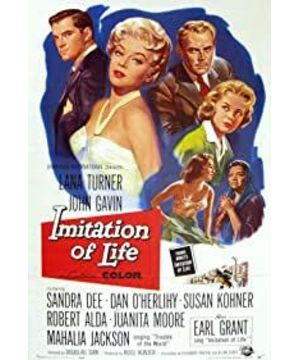A family melodrama that emphasizes personal emotions, moral and ethical standards. One of the classic Hollywood genres produced for female audiences. During the transition period of American society in the 1950s, in the post-Paramount Act era, the producers began to consciously present the contradictions and imaginative remedies of women's independence and freedom in the real society. Consciously integrated into the youth issues, racial issues, etc. that were prominent under the prevalence of post-war consumerism. The highlight of the film is the intertextuality between drama and reality in the film. The heroine Laura imitates the life of the character on the screen, but loses the true direction of her emotions in reality, which leads to a serious crisis in the family in reality. The two daughters are two-level imitations of Laura. Laura's daughter fell in love with her mother's lover, and the maid's daughter looked forward to giving up her family in exchange for higher social status and career achievements. Compared with the 1934 version of "The Imitation of Life", the 1950s version has more sense of alienation and strangeness. The ten-year love between Laura and Steve is intermittent and illogical, and many details are not explained and explained, other than that. In addition, the closed-loop causal narrative structure of the classic Hollywood period is also broken here. It seems that the ending of Annie's funeral is an opportunity to provide a happy ending with a happy reunion. In fact, it covers up an already fragmented interpersonal relationship, and the problems are not imagined. sexual solution. The mainstream concept of the nuclear family was being challenged on the Hollywood screen at this time.
View more about Imitation of Life reviews











